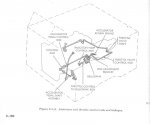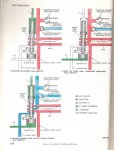Actually it is NOT a design flaw, the Army, Alison and AM General all did separate studies and all came up with the same answer, driver error, the Army ordered a trans with an 11 to 1 gear ratio in reverse, a cat D 6 has a 9 to one, so it is easy to see how low these trucks are geared, there has never been a trans problem that did not" occur during shifting from D to R with the R's up, Meaning shifting with out letting the revs settle to idle will crack the trans in low gear reverse because of the 11 to 1 ratio in a side sshaft trans...that is a catostrofic failure do to the driver, and a lack of training in the begining, These trucks are robust and so are there trans's, it has been proven thru hundreds of thousands of miles thru the deserts of iraq, I will add from the first units in the first war and the first units of the current conflick, the Nj guard saw more miles on the road then most for sure, and the leaders of these groups are most any way, have crossed paths with me at least and alot are good friends, and from Vietnam Vets in theater to new guys the 939 series of trucks are haled the finest cargo trucks in use from the guys who drove em and from there mouths...even over the 800 series from the guys with experince in theater for what its worth . And no surprise the FM class's too, Now it is important to note that there were absolutly no mass trans failures in threater, and that is du to driver training and the fact these trucks and transes are tough, And i have to say having one for 6 years i will say they are tough, They said impossible to over load, and that is a direct link to trans use in my eyes, they performed and stayed on the road, Now there were alot of 939s here at the Armory i hang and volunteer at, And in my quest for info they ran low in reverse all the time, so i have also for 6 years, and the BIG thing is If I were to shift with the R's up I would split the T case like they say, it is a side shaft Trans and one may call it a design flaw, but really it is still in use and will be in many trans's ...It is a matter of what this truck is and how to drive it, the novice should never drive this truck in low reverse because they will ruin it, the Driver who respects His truck and what it is will never have a problem period...

... I will add the problems were reported under severe use also, so in my opinion from all I have read they were not even that easy to split in low. But since I pay for it I will baby it, but man she pulls and We have been pretty stuck and reverse in low works real well, but like said I let her settle before shifting thats the key...





